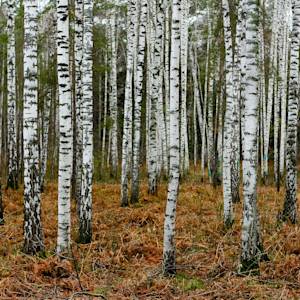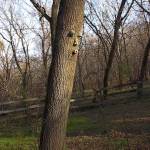Hyrcanian Forest, "The mother of European forests"
2023 CE • Iran and Azerbaijan
"Nestled between the Caspian Sea and the Elburz mountains, these lush, mountainous forests are a haven for rare and endangered species. With a name derived from ‘Wolf’s Land’, the Hyrcanian forests are home to wolves, brown bears, golden jackals, and elusive Persian leopards. Moreover, this ecoregion can be considered the mother of European forests, as after the Pleistocene glaciations, many plants dispersed across the continent from this important refuge . . . Coastal plains hosting lagoons, swamps, and salt marshes yield to great swathes of forest that climb the northern slopes of the Elburz Mountains. This continuous 800 km belt of deciduous trees hosts endemic species such as chestnut-leaved oak, Persian silk tree, Caspian locust, and Persian ironwood . . . The Hyrcanian forests are one of the world’s most important habitats for the endangered Persian leopard . . . These revered predators depend on the forest’s native ungulates: wild pig, roe deer, red deer, and wild goat. The woodlands are home to an abundance of unique life; Steiner’s lacerta, cave salamander, and the Hirkan field mouse are all endemic animals . . . Compared to forests in other regions of Europe and Asia, a large proportion of original habitat has persisted here. Despite this, a third of the Hyrcanian forests have been cleared since 1950, mostly for commercial timber, animal husbandry, and agriculture; tea and vegetables are amongst the major products harvested . . . Unsustainable agriculture, felling, and urban development are key drivers of habitat degradation, with the greatest impact in southern lowland areas. Road construction for timber harvest has fragmented the forest, and created access to the centre of the forests for illegal hunters."
"Caspian Hyrcanian Mixed Forests," One Earth.
Image: Ninara via Flickr, Attribution 2.0 Generic (CC BY 2.0)


Learn about Maya Lin’s fifth and final memorial: a multi-platform science based artwork that presents an ecological history of our world - past, present, and future.

Discover ecological histories and stories of former abundance, loss, and recovery on the map of memory.

Learn how we can reduce our emissions and protect and restore species and habitats – around the world.

See how art can help us rethink the problems we face, and give us hope that each one of us can make a difference.

Help make a global memorial something personal and close to home. Share your stories of the natural world.


